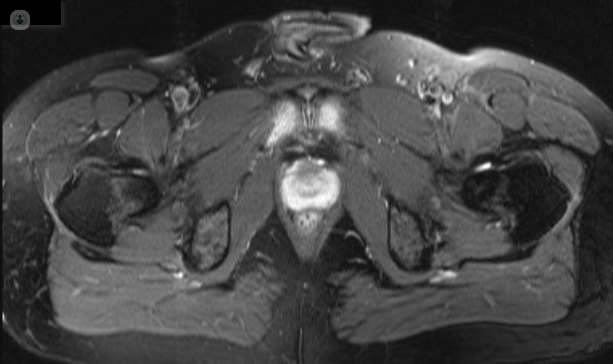

What is osteomyelitis?
Osteomyelitis is an infection of the bone, affecting between 10 and 100 people per 100,000 each year .
Bones can be infected in a number of ways: after surgery, from a fracture, or from a wound. It is also possible for an infection in the blood to affect the bone. Your risk of a bone infection is increased if you have had hip surgery, have a weakened immune system, or have diabetes.
Osteomyelitis can affect both children and adults. In children, it is more common to have acute osteomyelitis, which develops rapidly over a period of seven to 10 days. In adults, especially people with diabetes, it is more common to have chronic osteomyelitis.

Prognosis
Most cases of osteomyelitis are treatable, particularly acute osteomyelitis. In the case of chronic osteomyelitis, however, the infection can come back multiple times, and treatment may need to be more aggressive (see below). The faster osteomyelitis is diagnosed and treated, the more likely it is to clear up completely.
Symptoms of osteomyelitis
Osteomyelitis primarily causes pain where the bone is affected, but can also cause:
- fever and a high temperature
- swelling around the bone
- redness and tenderness in the affected area
- feeling generally unwell
How is osteomyelitis diagnosed?
When you visit the GP they will perform a physical exam of the affected area. They might order scans, such as an X-ray or MRI, to see the infection more clearly, and blood tests to determine the kind of infection it is. In some cases, the GP might recommend a bone biopsy to confirm the diagnosis.
Can it be prevented?
You can help prevent osteomyelitis by keeping and wounds or cut clean to stop infection. This means thoroughly washing a wound for several minutes then using sterile bandages.
If you have diabetes it’s important to regularly check your feet for signs of cuts or bruises, and see the GP as soon as you notice any infection.
How is it treated?
Treatment primarily involves the use of antibiotics to fight the infection. Antibiotics will usually be delivered by IV, so it is likely you will have to stay in hospital until you can take antibiotic tablets instead.
Sometimes surgery is considered if you have an abscess in the bone or the infection is pressing against something else. You may also need surgery if the bone has been damaged and needs to be removed, or if antibiotics have not been effective against the infection.
